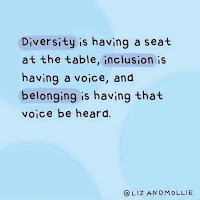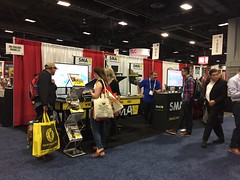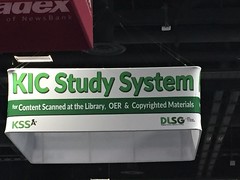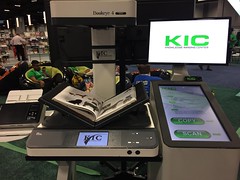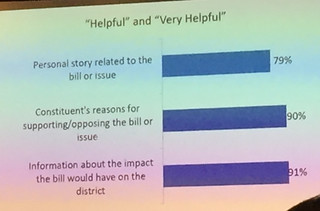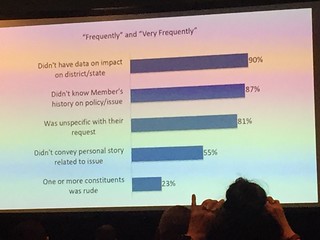- Hinchliffe, L.J. Workshop on Models for Copyright Education in Information Literacy An Initiative of the International Federation of Library Associations and Institutions
- Secker, J., Morrison, C., & Nilsson, I. Copyright Literacy and the Role of Librarians as Educators and Advocates An International Symposium
- Benson, S.R. Copyright Online Mini-Series: A Flipped Learning Approach to Disseminating Copyright Knowledge to Subject Liaison Librarians
- Kawooya, D., Ferullo, D., & Lipinski, T. Library and Information Science Curriculum in a Changing Professional Landscape: The Case of Copyright Education in the United States
Tuesday, July 23, 2019
Special issue of Journal of Copyright in Education and Librarianship on Models for Copyright Education
The Journal of Copyright in Education and Librarianship, vol. 3, no. 2 (2019) is a special issue which includes papers presented at the 2017 International Federation of Library Associations’ (IFLA) World Library and Information Congress' Models for Copyright Education in Information Literacy Program. Articles included are:
Saturday, July 20, 2019
#ALAac19 : Bias, microaggressions, diversity, and inclusion
Given the conversations in the U.S. since fall 2016 and some of the
actions that have occurred, it is not surprising that there were many
sessions related to bias, microaggressions, diversity and inclusion.
I was able to attend only two. I'm giving you the descriptions
because these capture important information.
Speakers: Miguel Juarez, Tina Rollins, and Tess Tobin
The speakers wanted to spent more of the time having a discussion with the audience, but unfortunately, they spent too much time providing background in this one-hour session. What is clear, though, from their presentation is that there are areas where we can focus, in order to improvement recruitment, retention, and advancement. Those areas include two which drew my attention:
Library staff of color need to find and connect with mentors, who can provide the type of mentoring they need. While a library might provide a mentor, staff should be willing to look elsewhere for additional mentors, who can provide a different point of view and perhaps a different mentoring relationship.
In terms of leadership training, current and future leaders need to be trained on working with diverse staff members, no matter what that diversity might be. We cannot assume that someone already has those skills. This training could occur in a number of different ways and might need to occur more than once, since we really don't leave everything about working in a diverse and inclusive environment in one sitting.
Our staff of color should also receive leadership training, because they will be leaders. Some will become team leaders, managers or directors, while others might lead a project. They should get into that leadership role with an understand of what it entails and how to succeed as a leader. They should see leadership as a natural progression in their careers. Having people of color in leadership roles puts them in the position of being role models for other staff as well as our communities, so we need to help them succeed, rather than setting them up for failure.
They noted the history of bias in the U.S., noting that it was used to justify enslavement and conquest. Some bias has been based on pseudo science. Some have been quite intentional through federal government actions.
Bias is a preference for - or against - a group of people and it occurs on a subconscious level. We all are biased. We all can learn what our biases are and then be more mindful of how we consciously react in various situation.
One of the exercise we did was to discuss how we would handle the following scenario.
That was a fascinating discussion! Wow. Did we all read the scenario the same way? And then what did we decide to do? You might discuss that scenario with your staff and see what happens. I guarantee it will be educational.
This session was both informative and fun. The speakers created good interaction with the participants and assured that we interacted with each other at our tables.
It is likely that every sessions at ALA related to diversity, bias, etc., began with some sort of an overview of the basics. While I know having an understanding of the basics is necessary, I wish there could have been a different way of doing it, so that each session could have spent more time one what was unique about that session. This might have meant creating an introductory session each day, which was marked and promoted as such. Then the other sessions could have had in their descriptions that people were expected to attend one of the introductory sessions first. Yes, I know this would be a hassle, but I think participants at these sessions would have appreciated it.
Finally, I want to say that I appreciate ALA having so many sessions on these topics. Now more than ever, we need to be trained and retrained on them. And then we need to be willing to use what we have learned to make our libraries more welcoming for everyone.
New Destinations in the Recruitment, Retention, and Advancement of People of Color to the Library Profession
Description
In spite of ongoing diversity initiatives and programs by organizations such as ARL, ACRL and other groups, recruitment, retention and promotion among library and information studies (LIS) students and library workers is lagging. Two recent projects, the REFORMA Telling Our Stories: Community Building to Recruit and Retain Latinx to the Library Profession grant and the Hampton University Forum on Minority Recruitment and Retention in the LIS Field grant, both awarded by the Institute of Museum and Library Services (IMLS), address the need to set new goals and create profession-wide efforts to look at the recruitment and retention efforts if we really want to diversify the profession. Libraries that succeed in recruiting must simultaneously focus on retention and promotion of new hires. Mentoring programs have proven to be effective in supporting new professionals and aiding them to remain in the field. There is a need to develop a climate in the workplace that supports and encourages advancement. The Hampton LIS Forum, held August 1-2, 2018 at Hampton University provided a safe space for the discussion of diversity initiatives and the concerns of people of color within the LIS profession. The forum also created a think-tank to create actionable strategies to address diversity in recruitment and retention. This presentation will discuss both grant-funded projects and the need for continued efforts and research to address the lack of diversity of people of color within the library and information studies field.
Speakers: Miguel Juarez, Tina Rollins, and Tess Tobin
Notes
The speakers wanted to spent more of the time having a discussion with the audience, but unfortunately, they spent too much time providing background in this one-hour session. What is clear, though, from their presentation is that there are areas where we can focus, in order to improvement recruitment, retention, and advancement. Those areas include two which drew my attention:
- Mentoring
- Leadership training
- Professional Development
- Emotional Support
- A Sense of Community
- Accountability
- Institutional Sponsorship
- Access to Networks
- Project Specific Feedback
- Role Models
- Safe Space
Library staff of color need to find and connect with mentors, who can provide the type of mentoring they need. While a library might provide a mentor, staff should be willing to look elsewhere for additional mentors, who can provide a different point of view and perhaps a different mentoring relationship.
In terms of leadership training, current and future leaders need to be trained on working with diverse staff members, no matter what that diversity might be. We cannot assume that someone already has those skills. This training could occur in a number of different ways and might need to occur more than once, since we really don't leave everything about working in a diverse and inclusive environment in one sitting.
Our staff of color should also receive leadership training, because they will be leaders. Some will become team leaders, managers or directors, while others might lead a project. They should get into that leadership role with an understand of what it entails and how to succeed as a leader. They should see leadership as a natural progression in their careers. Having people of color in leadership roles puts them in the position of being role models for other staff as well as our communities, so we need to help them succeed, rather than setting them up for failure.
An Introduction to Implicit Bias and Microaggressions
Description
The American Library Association commits to ameliorating marginalization and underrepresentation within the Association and the communities served by libraries through increased understanding of the effects of historical exclusion. This introductory training will explore implicit bias and microaggressions. Participants will be able to identify how these concepts create barriers and begin to explore ways to disrupt our biases and respond to microaggressions. This training will be presented three times throughout Annual Conference and is open to all conference attendees.Speakers: Mee Moua and Michael Wenger
Notes
They noted the history of bias in the U.S., noting that it was used to justify enslavement and conquest. Some bias has been based on pseudo science. Some have been quite intentional through federal government actions.
Bias is a preference for - or against - a group of people and it occurs on a subconscious level. We all are biased. We all can learn what our biases are and then be more mindful of how we consciously react in various situation.
One of the exercise we did was to discuss how we would handle the following scenario.
Two groups of students - one predominately white and one predominately black- are sitting at separate tables in the library, and both groups are speaking loudly to each other. Your colleague walks over to the table that has mostly black students and tells them to be quiet or they will be kicked out of the library.
What message do you think the students at either table received from the interaction?
What would you do or say to the students, if you were the one responding?
What would you do or say to your colleague?
That was a fascinating discussion! Wow. Did we all read the scenario the same way? And then what did we decide to do? You might discuss that scenario with your staff and see what happens. I guarantee it will be educational.
This session was both informative and fun. The speakers created good interaction with the participants and assured that we interacted with each other at our tables.
Resources
- Steele and Aronson. (1995) Stereotype threat and the intellectual test performance of African Americans.
- Devine, et al. (2015) Long-term reduction in implicit race bias: A prejudice habit-breaking intervention
- National Center for State Courts. (2013) Helping courts address implicit bias
Thoughts
It is likely that every sessions at ALA related to diversity, bias, etc., began with some sort of an overview of the basics. While I know having an understanding of the basics is necessary, I wish there could have been a different way of doing it, so that each session could have spent more time one what was unique about that session. This might have meant creating an introductory session each day, which was marked and promoted as such. Then the other sessions could have had in their descriptions that people were expected to attend one of the introductory sessions first. Yes, I know this would be a hassle, but I think participants at these sessions would have appreciated it.
Finally, I want to say that I appreciate ALA having so many sessions on these topics. Now more than ever, we need to be trained and retrained on them. And then we need to be willing to use what we have learned to make our libraries more welcoming for everyone.
Friday, July 12, 2019
#ALAac19 : Privacy and legal issues
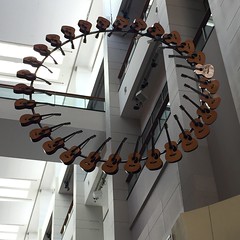 I was unable to attend these two sessions, but want to tell you what they were and point you towards articles about them. Why? Because I believe the topics to be important.
I was unable to attend these two sessions, but want to tell you what they were and point you towards articles about them. Why? Because I believe the topics to be important.Library Confidentiality: Your Privacy is Our Business
American Libraries covered this session with an article.
Description
Protecting patron privacy has long been a tenet of libraries. In today’s environment of social media dominance, political partisanship, and big data collection and analysis, libraries continue their gate-keeping tradition. Participants in this program will learn about the policies, guidelines, ethics and laws behind the privacy and confidentiality standards that affect their libraries. Attendees will have several opportunities to share and explore cultural and policy approaches to privacy and confidentiality with their colleagues, while strategizing to resolve challenging patron privacy scenarios and policy concerns they may encounter at their own institutions.
Privacy is as much an institutional cultural construct as it is a framework of laws, regulations, and policies. We begin by reflecting upon our own personal concepts of privacy. The presenters will share what students have told them about their privacy fears. You will find that our concerns are surprisingly similar, and yet we wittingly or unwittingly share our private information on a regular basis. As information professionals, what is our role in creating privacy and confidentiality awareness among our patrons and staff? Our examination expands to compare and contrast how we, as a profession, protect the privacy of our patrons even if that is at odds with how our patrons want (or do not want) their privacy protected.
This program makes participants aware of the potential for challenges to patron reading records and models options to be both proactive and reactive, outlines the history and practice of ALA’s ethical and legal response to those challenges, and reflects upon the increasing institutional focus on assessment, data-driven decision making and the use of Big Data to prove our value. Will these new initiatives threaten our patrons’ privacy?
Speakers: Kathleen Ross and Nancy Greco, St. John Fisher College
PLA Legal Issues in Public Libraries Forum
This event was part of the PLA meeting at ALA. American Libraries did an article on it.
Description
Can a patron require us to accept a gift subscription to a publication we don't want? Can I play music during a story hour and have the children sing along? What if we stream the story hour from our website? We notice one patron often comes into the library barefoot. Can we do anything about that? Can "that" group really be allowed to use our meeting room? We have received a list of books for which a number of patrons (there is a signed petition) want restricted access so that children cannot read or check out the books unless there is a parental permission on file. Must we abide by their wishes? The library has a new crafting space, with glue guns, various cutting blades and other sharp objects. Can we have patrons sign some sort of release protecting the library in case someone gets injured? I am reviewing an agreement from a new online content provider. What does it mean when the agreement says the vendor waives all warranties including non-infringement and that the library will indemnify the vendor? Need answers to these and similar questions?
PLA announces a new conference resource and informational session, the Legal Issues in Public Libraries Forum. The Forum is an open discussion venue for legal issues common in public libraries such as patron privacy, challenges to both in-house and online content, patron behavior, copyright and licensing, other liability issues such as those related to maker spaces, and more. Recent cases and legislation affecting libraries can also be discussed. The Forum serves as a resource, a place where issues you may be facing can be vetted in a neutral space. The Forum draws upon the experience and knowledge of your peers, of those in attendance.
Held at future Midwinter and ALA Annual Conferences, the Forum is convened by Tomas A. Lipinski, Dean and Professor at the School of Information Studies, University of Wisconsin Milwaukee, author and co-author with Mary Minow and Gretchen McCord of numerous books and articles on various legal problems in libraries. Tom, like Mary and Gretchen, is both a librarian and a lawyer. The hope is to always have several lawyer librarians in attendance as well as seasoned library administrators.
Please note this Forum is intended to provide accurate information in regard to the subject matter covered. However it is not a place to obtain legal advice or other professional service. If legal or other expert assistance is required, the services of a competent professional person should be sought.
The Standardized Mass Contract
Seth Godin spoke at the Association for Talent Development conference in May in Washington, DC. Godin, who knows how to promote himself and his activities, gave away copies of his book Stop Stealing Dreams: What is School Good For? and two of my friends got me a copy. The book is available online for free in full-text. Yes this was first published in 2012.
Godin has written the book in a series of short chapters and it is indeed focused on education, both K-12 and higher education. He does a very good job dissecting what is right and wrong with education today, which makes it a worthwhile read. In addition, there is text that can be applied to other situations, such as this about standardized mass contracts, which is a quote from Friedrich Kessler (1943):
I think, too, of the content we use from a variety of different databases and websites, where we cannot individually easily negotiate a different terms of use. (Notice the word "easily" in that sentence. Yes, negotiation is possible.)
Godin would argue that our education system has taught us to comply and to stay with what the larger group is doing. Thus we accept these click through agreements, because it is what is expected of us and it is what others are doing. In the past, libraries have automatically accepted the standardized mass contracts their vendors have given them, but that is changing.
What do we each need to do to change these contracts that have been standard since the industrial revolution? How do we create changeable contracts that can be easily altered to meet specific needs? Yes, I know we have the Creative Commons, but I'm thinking of database contracts, for example. Can we build momentum, rather than having individual libraries seemingly tackling this alone?
Godin has written the book in a series of short chapters and it is indeed focused on education, both K-12 and higher education. He does a very good job dissecting what is right and wrong with education today, which makes it a worthwhile read. In addition, there is text that can be applied to other situations, such as this about standardized mass contracts, which is a quote from Friedrich Kessler (1943):
The development of large scale enterprise with its mass production and mass distribution made a new type of contract inevitable — the standardized mass contract. A standardized contract, once its contents have been formulated by a business firm, is used in every bargain dealing with the same product or service. The individuality of the parties which so frequently gave color to the old type of contract has disappeared. The stereotyped contract of today reflects the impersonality of the market…. Once the usefulness of these contracts was discovered and perfected in the transportation, insurance, and banking business, their use spread into all other fields of large scale enterprise, into international as well as national trade, and into labor relations.When I read this, I thought immediately of the "click through" (or "click and accept" or"web-wrap") agreements that we are confronted with daily. These are standardized mass contracts which we cannot negotiate and must accept as-is, if we want to use that service. We are so used to these agreements - and their long, unintelligible legal text - that most of us click and agree automatically.
I think, too, of the content we use from a variety of different databases and websites, where we cannot individually easily negotiate a different terms of use. (Notice the word "easily" in that sentence. Yes, negotiation is possible.)
Godin would argue that our education system has taught us to comply and to stay with what the larger group is doing. Thus we accept these click through agreements, because it is what is expected of us and it is what others are doing. In the past, libraries have automatically accepted the standardized mass contracts their vendors have given them, but that is changing.
What do we each need to do to change these contracts that have been standard since the industrial revolution? How do we create changeable contracts that can be easily altered to meet specific needs? Yes, I know we have the Creative Commons, but I'm thinking of database contracts, for example. Can we build momentum, rather than having individual libraries seemingly tackling this alone?
Wednesday, July 10, 2019
Podcast: How to ensure free speech; and the EU's new copyright directive
RN Future Tense did a 30-minute podcast on "How to ensure free speech; and the EU's new copyright directive." While the later would definitely be of interest to you, the topic of free speech is something that many libraries and other groups are struggling with.
The podcast is available on the Future Tense website and other places where podcasts are available (e.g., iTunes).
The podcast is available on the Future Tense website and other places where podcasts are available (e.g., iTunes).
Description
Many Western governments continue to struggle with free speech. It’s not that they’re necessarily against it, it’s just that they don’t know how to effectively regulate out the offensive stuff. Political scientist Katherine Gelber has put forward what she calls the “capabilities-informed approach”. Also, the EU’s new Directive on Copyright — why are the big tech players warning it can’t work?
Tuesday, July 09, 2019
#ALAac19 : Digitization
Among the 701 exhibitors at the ALA Annual Conference were several digitization vendors; however, I only took photos of two of the booths. Interestingly, there is no way to search the exhibitor list on the ALA website to locate all of the digitization vendors. (Trust me, I tried.) With that as a introduction...
First, I continue to be pleased that digitization vendors such as SMA, DLSG, Backstage Library Works, and others continue to exhibit at library conferences. For some in our industry, digitization is still "new" (even though it isn't). So having a presence and being willing to talk about the technology and its uses is important for those thinking about digitization for the first time (or thinking about digitization in a new way).
Second, the technology is changing. Scanners are getting bigger. Complete systems are available for use by library patrons. Digitizing is being integrated with systems to help students study and help community members create their own works (e.g., photo albums).
By the way, if you have not looked at digitization equipment in a while, don't make decisions based on your old knowledge. While no one is screaming this from a mountaintop, you should know that these vendors are continuing to develop their technology and systems. They are not standing still.
Third, speaking of complete systems, DLSG offers the Knowledge Information Center, which allows patrons to scan materials and have the output in several different formats, including searchable PDF, JPEG, MS Word, KIC Study System, and others. These complete systems allow users (patrons, students) to control what they digitize and how they are going to access the material. While I've mentioned DLSG, I'm sure other vendors are offering similar technology.
Fourth, what vendors display at conferences isn't always what they have available on their websites. DLSG had two interesting publications at their booth:
While I cannot find these publications on the Internet, these seem to be similar (but not the same) to some of DLSG's online content, such as this about using KIC in K-12 education. This is a reminder that if you're interested in a company or technology, it can be good to pick up material from their booths, even if you don't talk to anyone. What you pick up may be a unique and helpful marketing piece.
I should note that I skimmed the 701 exhibitors, rather than taking a deep dive into any particular area. I did not have as much unstructured time as I would have liked, and so did not really spend as much time in the exhibit hall as I likely should have. The time I had was spent getting a feel for the entire exhibit hall, going to a couple specific meetings, talking to library colleagues, and resting my feet. (Thanks to those companies that had seating available that could be used without feeling that a marketing pitch was eminent.)
Below is a photo of the SMA booth, which contained large format scanners. There are also three photos of the DLSG Knowledge Information Center (KIC) booth, which was massive.
What stood out to me?
First, I continue to be pleased that digitization vendors such as SMA, DLSG, Backstage Library Works, and others continue to exhibit at library conferences. For some in our industry, digitization is still "new" (even though it isn't). So having a presence and being willing to talk about the technology and its uses is important for those thinking about digitization for the first time (or thinking about digitization in a new way).
Second, the technology is changing. Scanners are getting bigger. Complete systems are available for use by library patrons. Digitizing is being integrated with systems to help students study and help community members create their own works (e.g., photo albums).
By the way, if you have not looked at digitization equipment in a while, don't make decisions based on your old knowledge. While no one is screaming this from a mountaintop, you should know that these vendors are continuing to develop their technology and systems. They are not standing still.
Third, speaking of complete systems, DLSG offers the Knowledge Information Center, which allows patrons to scan materials and have the output in several different formats, including searchable PDF, JPEG, MS Word, KIC Study System, and others. These complete systems allow users (patrons, students) to control what they digitize and how they are going to access the material. While I've mentioned DLSG, I'm sure other vendors are offering similar technology.
Fourth, what vendors display at conferences isn't always what they have available on their websites. DLSG had two interesting publications at their booth:
- Digitization Technologies for Public Libraries
- Digitization Technologies for Academic Libraries
While I cannot find these publications on the Internet, these seem to be similar (but not the same) to some of DLSG's online content, such as this about using KIC in K-12 education. This is a reminder that if you're interested in a company or technology, it can be good to pick up material from their booths, even if you don't talk to anyone. What you pick up may be a unique and helpful marketing piece.
I should note that I skimmed the 701 exhibitors, rather than taking a deep dive into any particular area. I did not have as much unstructured time as I would have liked, and so did not really spend as much time in the exhibit hall as I likely should have. The time I had was spent getting a feel for the entire exhibit hall, going to a couple specific meetings, talking to library colleagues, and resting my feet. (Thanks to those companies that had seating available that could be used without feeling that a marketing pitch was eminent.)
Photos
Below is a photo of the SMA booth, which contained large format scanners. There are also three photos of the DLSG Knowledge Information Center (KIC) booth, which was massive.
Labels:
ALA,
Book Digitization,
Conference,
Digitization,
Libraries
Monday, July 08, 2019
#ALAac19 : How to Hug a Porcupine: Relationship Building with Lawmakers and Why It's Important
In this session, Brad Fitch, president and CEO of the Congressional Management Foundation, spoke on how to build relationships with elected
officials, as well as effective communication tactics.
I want to note that early in his presentation, Fitch recommended the documentary The Congress, which was released by Ken Burns in 1999. Clips from the documentary are available for free, with the entire documentary available for purchase. This documentary provides the history of Congress, which most people know little about.
Fitch, who has been a Congressional aide, gave us a valuable lesson on advocating with our elected officials. We tend to think that an official needs to hear from many people, in order to be spurred to action, but that is not true. Often just hearing from 10-30 people is enough, especially if those people personalize their communication, and connect themselves and their stories to the issue.
Note bene: The photos below are of slides Fitch used during his presentation. The background on the slides was white, but when I photographed them, the background displayed in a rainbow color. I don't know why it happened, but I do like the result.
As the slide above shows, in-person visits from constituents provides the most influence, followed by contact from constituents' representatives, individualized email messages, and a visit from a lobbyist. What provides the least influence is what we often do and that is a form email message. Those form email messages, which many organizations have us do, have the least amount of effect.
This slide notes that a personal story related to the bill or issue is rated as "helpful" or "very helpful" by 79% of politicians and their staffers surveyed. When a constituent provide a reason for supporting or opposing a bill or issue, that is seen as "helpful" or "very helpful" by 90% of respondents. Information about the impact the bill will have on their Congressional member's district was rated as "helpful" or "very helpful" by 91% of respondents.
So what is unhelpful? As the slide above shows, it is unhelpful when the constituent:
Due to Brad Fitch's work in DC, this was a valuable and well-thought out presentation. I clearly could not capture all of the information he provided. Luckily, his organization has useful information on its website (Communicating with Congress), where we can continue our learning.
By the way, the ALA Cognotes publication had a story on this session. It is on page 12 in the June 24 issue.
We are fortunate that there are library advocates in our midst, who are willing to train us as well as spearhead advocacy efforts. Among them are Libby Post, John Chrastka and Patrick Sweeney, and ALA. It is likely that your regional or state library association (e.g.. NYLA) also provides help with and training for advocacy. In other words, if advocating for your library or cultural heritage institution is new to you, there is someplace where you can learn more about what to do, as well as people who can help.
Description
Building relationships with elected officials can sometimes be difficult and uncomfortable. It forces you and your key stakeholders to get close to politicians in ways that may feel “prickly” – like hugging a porcupine. This program will help participants overcome that discomfort, revealing the methods and benefits for building relationships with elected officials. Participants will learn: who members of Congress and state legislators listen to; what congressional staffers believe are the most effective communications tactics for influencing undecided Members of Congress; and how to conduct effective in‐person meetings, influence legislators at town hall meetings, as well as effective advocacy in the state/district.
Summary
I want to note that early in his presentation, Fitch recommended the documentary The Congress, which was released by Ken Burns in 1999. Clips from the documentary are available for free, with the entire documentary available for purchase. This documentary provides the history of Congress, which most people know little about.
Fitch, who has been a Congressional aide, gave us a valuable lesson on advocating with our elected officials. We tend to think that an official needs to hear from many people, in order to be spurred to action, but that is not true. Often just hearing from 10-30 people is enough, especially if those people personalize their communication, and connect themselves and their stories to the issue.
Note bene: The photos below are of slides Fitch used during his presentation. The background on the slides was white, but when I photographed them, the background displayed in a rainbow color. I don't know why it happened, but I do like the result.
As the slide above shows, in-person visits from constituents provides the most influence, followed by contact from constituents' representatives, individualized email messages, and a visit from a lobbyist. What provides the least influence is what we often do and that is a form email message. Those form email messages, which many organizations have us do, have the least amount of effect.
This slide notes that a personal story related to the bill or issue is rated as "helpful" or "very helpful" by 79% of politicians and their staffers surveyed. When a constituent provide a reason for supporting or opposing a bill or issue, that is seen as "helpful" or "very helpful" by 90% of respondents. Information about the impact the bill will have on their Congressional member's district was rated as "helpful" or "very helpful" by 91% of respondents.
So what is unhelpful? As the slide above shows, it is unhelpful when the constituent:
- Didn't have data on impact on the person's district or state
- Didn't know the Congressional member's history on the policy or issue
- Was unspecific with their request
- Didn't convey a personal story related to the issue
- Was rude
- Begin with the end in mind. In other words, know what you hope to achieve.
- Set the stage for your story. This could be a brief introduction.
- Paint a picture or, in other words, tell a personal story related to the issue or policy.
- Describe the fight or conflict related to this issue or policy.
- Include a surprise.
- Introduce the potential for success and joy. What will happen if this issue or policy is addressed in the manner that you are advocating for?
- Finish with a hook.
Due to Brad Fitch's work in DC, this was a valuable and well-thought out presentation. I clearly could not capture all of the information he provided. Luckily, his organization has useful information on its website (Communicating with Congress), where we can continue our learning.
By the way, the ALA Cognotes publication had a story on this session. It is on page 12 in the June 24 issue.
Learn from Others
We are fortunate that there are library advocates in our midst, who are willing to train us as well as spearhead advocacy efforts. Among them are Libby Post, John Chrastka and Patrick Sweeney, and ALA. It is likely that your regional or state library association (e.g.. NYLA) also provides help with and training for advocacy. In other words, if advocating for your library or cultural heritage institution is new to you, there is someplace where you can learn more about what to do, as well as people who can help.
Wednesday, July 03, 2019
#ALAac19 : Yes, copyright sessions!
 Yes, there were copyright related sessions at the ALA Annual Conference in Washington, DC.
Yes, there were copyright related sessions at the ALA Annual Conference in Washington, DC. Copyright Help 5 cents
This was not a session. A group of copyright librarians had a Copyright Help booth near the registration area and I thought this was awesome. I have no idea how many people may have stopped to ask a question. However, I do know that we need to recognize that asking questions is important and helpful, especially when you can someone who understands copyright law. Kyle Courtney, pictured above at the booth, has spearheaded an effort to create copyright first responders. Like this booth, those first responders are available to help triage questions people might have.
Resources
- Harvard’s Copyright First Responders to the Rescue (2014)
- Copyright First Responders webinar now available (2017)
- Kyle Courtney and the Copyright First Responders (2018)
Empowering Libraries to Lend Digital Books via Controlled Digital Lending
Michelle Wu, Jim Michalko, and Kyle Courtney gave this session on controlled digital lending (CDL). Description:
Book scanning projects have made tremendous strides in bringing public domain literature online for the world's scholars and enthusiasts, but materials published after 1923 are still not widely available due to policy and copyright uncertainties. The Internet Archive has developed a controlled digital lending service (CDL) that enables libraries to digitize and lend a digital version of a physical volume stored on their shelves. Through CDL, a library circulates the exact number of copies it owns, regardless of format, while ensuring that users cannot redistribute or copy the digitized version. Using CDL, libraries can make available the 20th-century scholarship that is largely absent from their digital holdings in a way that respects the rights of authors and publishers. This panel will bring together librarians, publishers, and ebook specialists to share their experiences about serving patrons via controlled digital lending.With controlled digital lending, a library can digitize a book, store the physical book, and then lend the digital version to one person at a time. In other words, lending the digital book in the same way you would lend a physical book. Having the book in digital form would allow it to be loaned more widely. This uses both Section 109 and Section 107 of U.S. Copyright Law.
What's the catch?
The Position Statement on Controlled Digital Lending notes the following:
libraries should (1) ensure that original works are acquired lawfully; (2) apply CDL only to works that are owned and not licensed; (3) limit the total number of copies in any format in circulation at any time to the number of physical copies the library lawfully owns (maintain an “owned to loaned” ratio); (4) lend each digital version only to a single user at a time just as a physical copy would be loaned; (5) limit the time period for each lend to one that is analogous to physical lending; and (6) use digital rights management to prevent copying and redistribution.If this area is of interest to you, I encourage you to read the resources below.
Resources
- Controlled Digital Lending by Libraries (website)
- A White Paper on Controlled Digital Lending of Library Books (2018)
- Controlled Digital Lending of Library Books (2018)
- Controlled Digital Lending Concept Gains Ground (2018)
- DPLAfest 2019: Session highlights (2019) - Yes, this includes information on CDL, which was discussed at this conference.
Figuring out the Fourth Factor
With more then 21,000 participants and hundreds of vendors in the exhibit hall, there is clearly too much to do. So I unable to attend this session, "Figuring out the Fourth Factor: Copyright librarians discuss fair use case law," but thankfully American Libraries wrote an article on it.
Coasters from the Copyright Help Booth
Here are coasters about fair use factors 2, 3, and 4. Sadly, there didn't seem to be a coaster available for factor 1.


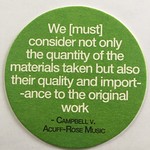
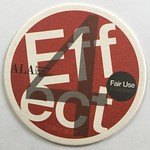

#ALAac19 : I went, I saw, and I was overwhelmed!
 This year, I attended my first American Library Association Annual Conference. Yes, my first! I spent more than two decades involved in the Special Libraries Association and made that my primary affiliation and conference home. While I had been around the edges of a couple ALA Annual Conferences, I had never fully immersed myself. This year, I dove into the deep end!
This year, I attended my first American Library Association Annual Conference. Yes, my first! I spent more than two decades involved in the Special Libraries Association and made that my primary affiliation and conference home. While I had been around the edges of a couple ALA Annual Conferences, I had never fully immersed myself. This year, I dove into the deep end!The conference was June 20-25 in Washington, DC with most of the events being on June 21-24. There was too much happening for me to blog during the conference, so my hope is to catch up this week, including a post on digitization vendors. So stay tuned.
I want to note the size of this conference, because most people have no idea how mammoth it is. This year, the total attendance was 21,460 participants. That was higher than 2018 (17,599 in New Orleans) and lower than 2017 (22,702 in Chicago). It was also lower than the most recent annuals that were held in DC. The 2007 conference in DC had 28,499 attendees and 95+ exhibits. In 2010, the conference was again in DC and had 26,201 attendees. Participation in the ALA Annual Conference does vary based on location, with some locations being more desirable than others. While 21,460 is lower, the conference is still huge given number of rooms needed for sessions, the number of hotel rooms used, the sheer number of concurrent sessions, etc. It is a conference where you cannot see or do it all, even if you never slept.
Supreme Court Justice Sonia Sotomayor
Let me tell you about one session.
Many authors speak at ALA and this year Supreme Court Justice Sonia Sotomayor was one of them. Justice Sotomayor is the author of My Beloved World, Turning Pages, The Beloved World of Sonia Sotomayor, and the forthcoming Just Ask! She was a warm and engaging speaker, who wandered the ballroom as she spoke. She shook hands with people and had her photo taken with those who asked her questions (questions were submitted in advance). As you can see from the photo above (she is off in the distance in a white jacket), there was security present, whom she said was there to protect her from herself! However, she did note that no one should make any sudden moves.
From her talk, one thing stood out to me and it was in response to a question. Justice Sotomayor said that how she writes legal briefs has changed since she has been writing children's books. A children's book need to be focused in terms of topic and pages. Her legal briefs have become shorter and more focused, according to her law clerks and she seemed quite pleased with that.
While I have not read any of her books, I thoroughly enjoyed listening to her talk about herself and her books. And I pleased to know that someone who is so down to earth is serving on our Supreme Court.
Subscribe to:
Comments (Atom)
